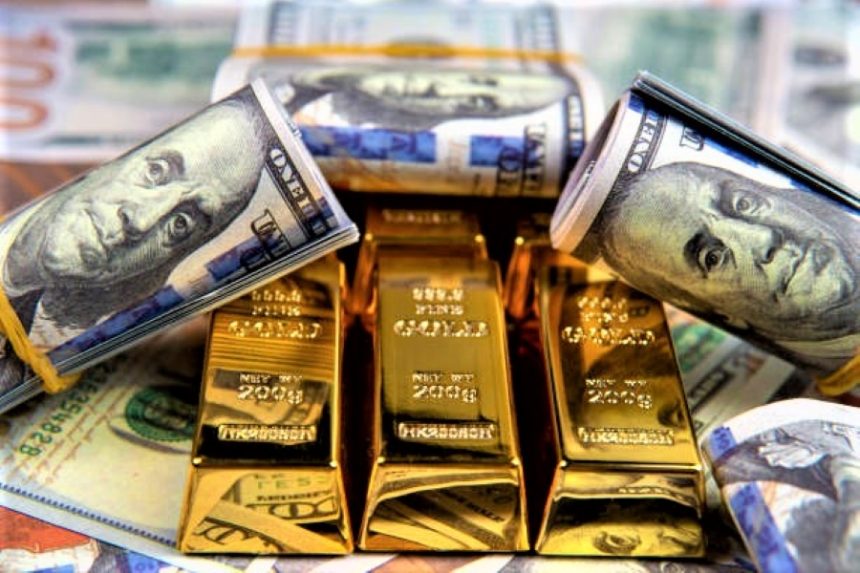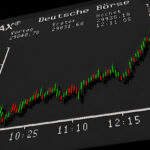Gold (XAUUSD) has staged a solid rebound from a one-month low, reclaiming territory above the key $3,300 mark in Thursday’s European session. The recovery follows a sharp pullback driven by a hawkish Federal Reserve stance, which initially lifted the US Dollar (USD) to a two-month high. However, as greenback bulls take profits and await clarity from the upcoming PCE Price Index, gold finds fresh buying interest on dips.
While the safe-haven yellow metal continues to face resistance from resilient US economic data and diminished expectations of a near-term rate cut by the Fed, the softening USD ahead of the inflation print provides an opportunity for technical recovery.
Fed Holds Steady But Signals Caution on Rate Cuts
The Federal Reserve, during its July policy meeting, left interest rates unchanged for the fifth consecutive time, holding the benchmark rate in the 4.25%-4.50% range. However, the internal dynamics of the committee raised eyebrows: Fed Governors Michelle Bowman and Christopher Waller dissented, favoring a rate hike a rare move last seen in 1993. This dissent signals a visible rift in Fed consensus and injects uncertainty into the future policy path.
Chair Jerome Powell, in his post-meeting press conference, emphasized that no decisions had been made regarding rate cuts in September. This comment sharply reduced market expectations of a dovish pivot. In response, the US Dollar surged, pushing gold down toward a one-month low below $3,280.
But as Thursday began, traders reassessed their positions, taking profits off the table ahead of the Fed’s preferred inflation gauge the Core Personal Consumption Expenditures (PCE) Price Index.
Economic Data Shows Strong US Growth, Mixed Labor Signals
The macroeconomic backdrop further complicated the gold outlook.
The US GDP showed a strong rebound in Q2, expanding by 3.0% annualized, recovering from a prior 0.5% contraction. This robust reading affirmed the Fed’s assertion that the economy continues to grow at a “solid pace.”
Meanwhile, private payrolls, reported by ADP, rose by 104,000 in July, following a revised 23,000 job loss in June. While this suggests resilience in labor markets, the figure still underperformed expectations, providing a mixed signal.
Combined, these figures suggest that the Fed has little urgency to ease policy, reinforcing the view that interest rates may remain higher for longer a traditionally bearish outcome for gold. However, these same conditions also place increased weight on upcoming inflation data to drive the next big move.
Market Mood Buoyant, Yet Gold Finds Support from Retreating USD
Markets are broadly in risk-on mode, which typically diminishes demand for traditional safe havens like gold. Still, the modest pullback in the US Dollar, as traders wait for inflation confirmation, has opened the door for technical dip-buying in the gold market.
This tug-of-war between strong economic data and delayed inflation signals means gold is likely to remain volatile and rangebound in the short term until a decisive inflation report breaks the impasse.
Technical View: Gold Holds $3,300, But Bullish Conviction Still Lacking
From a technical standpoint, the $3,300 level has emerged as a crucial psychological support-turned-resistance. After briefly breaching this area on Wednesday, gold buyers stepped back in as the USD cooled.
Immediate resistance is seen near the $3,320-$3,330 zone, which coincides with the 50-day EMA and recent intraday swing highs.
Initial support lies around $3,280, followed by the monthly low near $3,260.
A clean break above $3,330, backed by strong buying volume, could open the door for a push toward $3,370-$3,400, while failure to hold above $3,280 risks a slide back to late-June levels.
Gold’s directional clarity now hinges almost entirely on the US Core PCE Price Index, expected later in the session.
What is the PCE Price Index, and Why Does It Matter?
The Personal Consumption Expenditures (PCE) Price Index is the Fed’s preferred gauge of inflation, as it accounts for changing consumer behavior and a broader range of prices than CPI.
Markets expect a modest cooling in core PCE inflation, which could reignite hopes for a rate cut later this year. Conversely, a hotter-than-expected print would reinforce the Fed’s hawkish tone and likely drive the US dollar higher, potentially pulling gold lower once again.
Expect fireworks around the release, as gold remains extremely sensitive to shifts in rate expectations and real yields.
Conclusion:
As someone with three years of hands-on experience tracking and analyzing financial markets, the current gold setup feels familiar—caught between Fed ambiguity and data-driven volatility. While the recent rebound above $3,300 is encouraging for bulls, the path forward is narrow and uncertain.
Key takeaways:
The dollar’s strength is the biggest headwind for gold.
The Fed’s internal split shows policy indecision, which could make gold more reactive to each data release.
We’re in a phase of “wait-and-react” traders should avoid overcommitting before clearer inflation trends emerge.
My advice? Stay nimble. Let the data lead.
Disclaimer: This blog is for informational purposes only and does not constitute financial advice. Always conduct your own research and consult a professional advisor before making investment decisions.
[sc_fs_multi_faq headline-0=”h2″ question-0=”Why did gold rebound today?” answer-0=”Gold rebounded primarily due to profit-taking in the US Dollar ahead of the US PCE inflation report. This weakened the greenback slightly, allowing gold to recover above the $3,300 level.” image-0=”” headline-1=”h2″ question-1=”What is the importance of the PCE Price Index for gold?” answer-1=”The Core PCE is the Fed’s favored inflation gauge. A cooler-than-expected reading could support gold by reviving hopes of a Fed rate cut, while a hot reading could boost the USD and weigh on gold.” image-1=”” headline-2=”h2″ question-2=”Will gold go higher from here?” answer-2=”Short-term direction depends on the PCE data. If inflation eases, gold could challenge resistance near $3,330–$3,370. But strong inflation may cap gains or trigger fresh declines. ” image-2=”” count=”3″ html=”true” css_class=””]









